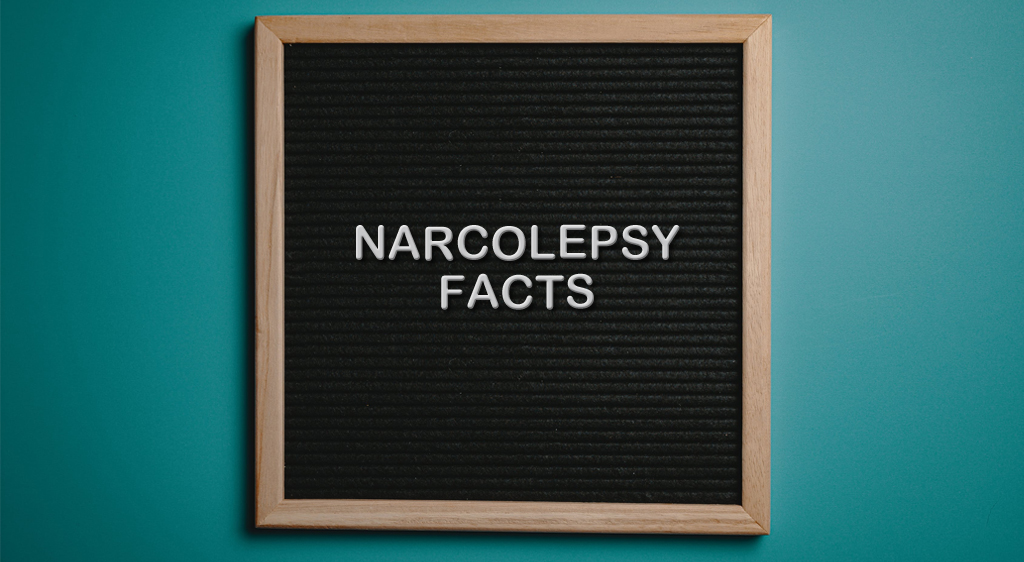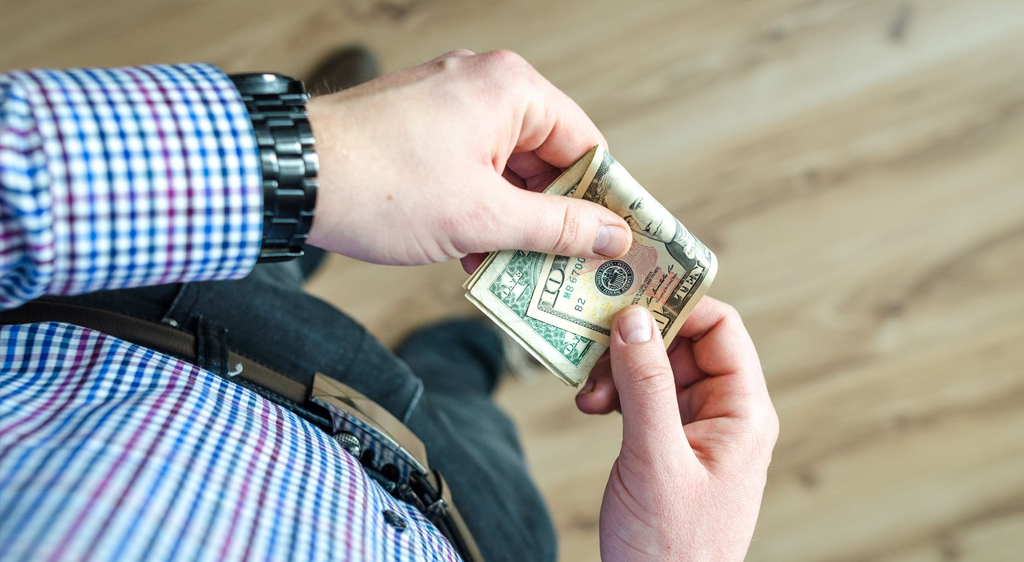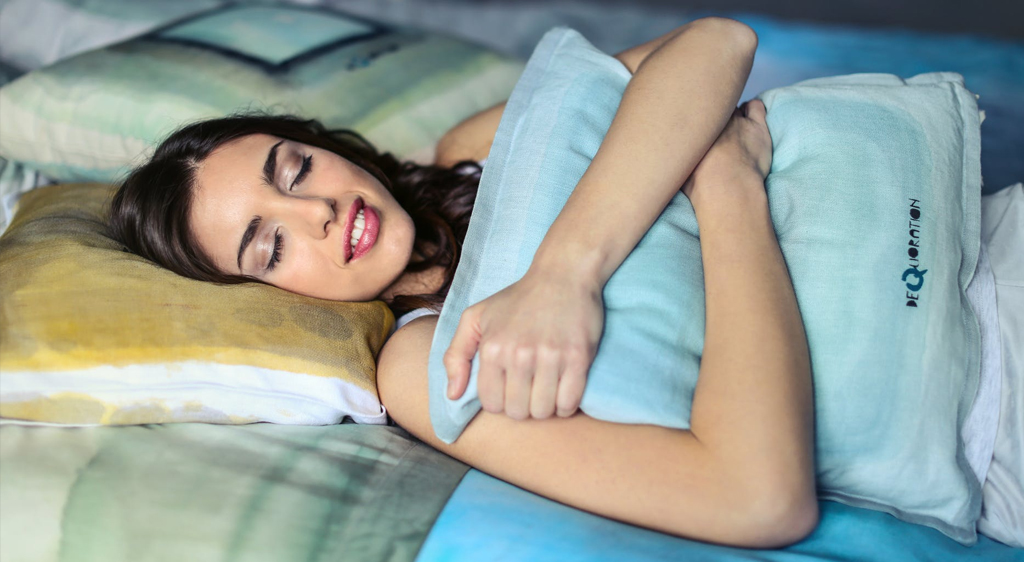Narcolepsy Statistics
Feeling sleepy in the middle of the day is common. However, excessive daytime sleepiness may be a sign of a more serious problem. Narcolepsy is a neurological disorder that affects people’s ability to wake and sleep. This disorder causes excessive, uncontrollable daytime sleepiness, and people may suddenly fall asleep at any time, during any type of activity. (WebMD)
Please link to us if you find any information useful on this page. It helps us out . Thank you.
The Most Surprising Narcolepsy Statistics
- Narcolepsy is estimated to affect 3 million people worldwide.
- Only about 25% of people who have narcolepsy are diagnosed and are receiving treatment.
- Symptoms typically begin to occur between the ages of 10 and 30, although narcolepsy can occur at any age.
- Close to 50% of patients develop symptoms in their teenage years.
- Misdiagnosis is estimated to occur in about 60% of narcolepsy patients.
- Underdiagnosed and delays of 5 to 10 years are common before making a firm diagnosis.
- In the US, narcolepsy is 50% more prevalent in females.
- People with first-degree relatives who have narcolepsy have a 40-fold higher risk of developing the disorder.
(Narcolepsy Network), (National Center for Biotechnology Information), (Richard Dodel, MD)
General Narcolepsy Statistics and Facts
1. In the US, 1 in every 2,000 people have narcolepsy.
It is estimated that anywhere from 135,000 to 200,000 people in the United States have narcolepsy. However, since this condition often goes undiagnosed, the number may be higher.
(Narcolepsy Network), (National Institute of Neurological Disorders and Strokes)
2. There are 2 types of narcolepsy.
Narcolepsy type 1 occurs when nearly all of the neurons that contain orexin are lost. Orexin, also known as hypocretin, is a neuropeptide that regulates arousal, wakefulness, and appetite. Narcolepsy type 1, besides causing excessive daytime sleepiness, also causes cataplexy, a condition that causes muscle weakness that is usually triggered by intense emotions such as excitement. Narcolepsy type 2 also causes excessive daytime sleepiness but usually do not have muscle weakness triggered by emotions. This type has less severe symptoms and has normal levels of orexin.
(National Center for Biotechnology Information), (National Institute of Neurological Disorders and Stroke)
3.Narcolepsy statistics show that a variant of a gene is present in 90 to 95% of narcolepsy type 1 cases.
The gene HLA-DQB1 plays a crucial role in the immune system. One of its variants, HLA-DQB1*0602, is found in most narcolepsy type 1 cases. However, this gene variant is also present in about 20% of the general population without narcolepsy, so how this gene variant contributes to narcolepsy type 1 is still unclear.
(National Center for Biotechnology Information)
4. People with narcolepsy frequently enter REM sleep after around 15 minutes of falling asleep.
Normally, people enter the rapid eye movement sleep stage after 60 to 90 minutes of falling asleep. Dreams occur during REM sleep, and the brain keeps muscles limp during this sleep stage, which prevents people from acting out their dreams. Moreover, for people with narcolepsy, some aspects of REM sleep that normally occur only during sleep, like lack of muscular control, sleep paralysis, and vivid dreams can occur when awake.
(National Institute of Neurological Disorders and Stroke)
5. People with narcolepsy have a sleep latency of 8 minutes or less.
Sleep latency is the time it takes for people to fall asleep. A Multiple Sleep Latency Test (MSLT) checks for excessive daytime sleepiness by measuring how quickly a person falls asleep in a quiet environment during the day. The person will commonly take 5 separate naps. Healthy people should fall asleep within 10 to 20 minutes.
(Sleep Education), (Neupsy Key)
6. Cataplexy is the first symptom to appear in about 10% of cases of narcolepsy.
Cataplexy is sudden and uncontrollable muscle weakness or paralysis that happens during the day. It is often triggered by strong emotions, such as excitement or laughter. Because of this, narcolepsy can be misdiagnosed as a seizure because of the similarity between cataplexy and seizure attacks.
(National Institute of Neurological Disorders and Stroke), (National Sleep Foundation)
7. People with secondary narcolepsy can sleep for more than 10 hours.
Secondary narcolepsy occurs when a part of the brain called the hypothalamus is damaged. The damage may be due to a head injury, brain tumor, multiple sclerosis, or encephalitis. In addition to experiencing the typical symptoms of narcolepsy, individuals may also have severe neurological problems.
(National Institute of Neurological Disorders and Stroke), (National Health Service)
8. Up to 90% of narcolepsy have REM sleep without atonia (RWA).
Atonia is a condition of paralysis or muscle strength loss. It commonly happens during REM sleep. Scientists believe REM atonia happens to prevent people from acting out their dreams. However, people with narcolepsy commonly report REM sleep without atonia. Without atonia, people can perform dangerous acts while asleep, possibly injuring themselves or others.
(Birgit Frauscher, M.D)
9. Narcolepsy statistics show that up to 35% of people with narcolepsy have REM sleep behavior disorder (RBD).
REM sleep behavior disorder is a sleep disorder in which people physically act out vivid, often unpleasant dreams with vocal sounds and sudden, often violent arm and leg movements during REM sleep. Although RBD does not always occur in RWA, the likelihood that RBD does occur increases.
(Dr. Sam Nightingale), (Mayo Clinic)
10. Narcolepsy statistics show that about ⅔ of narcolepsy patients also had other health conditions.
The Wake Up Narcolepsy Survey found that the most frequent comorbid conditions reported were anxiety, sleep apnea, migraines, and fibromyalgia or other chronic pain conditions.
(Sleep Review)
Other Disorders Associated with Narcolepsy
11. More than 50% of narcolepsy patients can have anxiety disorder.
A study in the Netherlands found that people with narcolepsy were 16 times more likely to have an anxiety disorder, especially social anxiety or panic attacks. The social anxiety may be due to the fear of falling asleep in public, and the panic attacks may be due to the fear of losing control over their bodies.
(H.A. Droogleever, M.D), (Psychiatic News)
12. Various narcolepsy statistics show that up to 57% of people with narcolepsy have depression.
Some researchers think the prevalence of depression in narcolepsy patients is due to the overlap in symptoms, such as disordered nocturnal sleep, social withdrawal, impaired attention, fatigue, and weight gain. However, when the overlapping symptoms are excluded, a higher level of depressive symptoms is still present in patients with narcolepsy.
(National Center for Biotechnology Information), (H.A. Droogleever, M.D)
13. ADHD is present in 20 and 35% of people with narcolepsy type 1 and type 2, respectively.
Recently, there is more evidence that sleep dysfunction is intimately related to the development of attention deficit hyperactivity disorder. Restricted, dysfunctional, or fragmented sleep may precipitate ADHD features. A separate study found that the presence of ADHD symptoms in children and adolescents with narcolepsy was found to be about two-fold higher.
(National Center for Biotechnology Information), (Dr. Michel Lecendreux)
14. A study saw that about 23.3% of people with narcolepsy or cataplexy have an eating disorder.
Weight gain in narcolepsy is possible because of changes in energy expenditure due to excessive sleepiness, changes in basal metabolic rate, or endocrine disturbances. This weight gain can lead to eating disorders. The same study did not find any eating disorder in any of the participants without narcolepsy. Half of the narcoleptic participants reported a persistent craving for food, as well as binge eating. Moreover, 25% reported binging at least twice a week.
(National Center for Biotechnology Information)
15. Various narcolepsy statistics show that schizophrenia is present in 5 to 13% of people with narcolepsy type 1.
People with both narcolepsy type 1 and schizophrenia have higher risk factors and worse clinical outcomes compared with individuals with either disorder alone. A separate study found that a group with both disorders have higher body mass index, more severe psychotic symptoms, more frequent depressive symptoms and hospitalization, and lower treatment response.
(Dr. Yefim Cavalier), (National Center for Biotechnology Information)
16. People with narcolepsy may have other sleep disorders.
The other sleep disorders that may be associated with narcolepsy are sleep apnea, restless legs syndrome, and periodic leg movement disorder.
(National Organization of Rare Diseases)
17. A study found that nearly 25% of people with narcolepsy also had obstructive sleep apnea.
Narcolepsy and obstructive sleep apnea syndrome (OSAS) are two conditions associated with excessive daytime sleepiness. Because of this similarity, OSA can interfere with and delay the diagnosis of narcolepsy.
(Dr. Gemma Sansa)
18. A study found that 35 to nearly 38% of children with narcolepsy also had periodic limb movement disorder (PLMD).
A study found that 37.7% of African American children and 37.5% of Caucasian children with narcolepsy had PLMD. These children also had more disturbed sleep and shorter sleep latencies. In adults, PLMD is more commonly present in people with narcolepsy compared with those without narcolepsy. PLMD can disrupt REM sleep and daytime functioning, leading to a hypothesis that PLMD is an intrinsic feature of narcolepsy.
(National Center for Biotechnology Information)
19. A study found that restless legs syndrome (RLS) was present in nearly 15% of people with narcolepsy.
A study with 3 sleep research centers in Italy and France recruited 419 adults, 184 of whom had narcolepsy type 1. In contrast, RLS was only present in 3% of people without narcolepsy. The age onset of RLS in the narcoleptic group was around 32 years old, around 10 years after narcolepsy onset. RLS symptoms occurred 2 times per week.
(National Center for Biotechnology Information)
20. Up to 80% of people with narcolepsy can have headaches.
There are many ways researchers think why headaches such as migraines are prevalent in people with narcolepsy. Serotonergic agents treat headaches, and during REM sleep, serotonin production stops. Melatonin is another chemical that treats headaches, and the body uses serotonin to make melatonin. Excessive sleepiness is a hallmark of narcolepsy. Sleepiness happens when adenosine accumulates. There are four primary adenosine receptors in the brain. Some will inhibit pain, and some will actually have an activating effect on pain.
(MD Edge/Neurology)
21. More than 60% of narcolepsy patients are past and present smokers.
Although some studies show that low levels of nicotine increase REM sleep, other studies also show that high levels of nicotine reduce REM sleep and total sleep time. Many narcolepsy patients use nicotine to manage excessive daytime sleepiness and cataplexy.
(American Academy of Sleep Medicine), (National Center for Biotechnology Information)
22. About 75% of narcoleptic smokers experience burns.
Many people with narcolepsy use nicotine to manage sleepiness and cataplexy. However, a study found the dangers of smoking for people with narcolepsy. Since people with narcolepsy can suddenly fall asleep during any activity, those who smoke nicotine in bed are at a high risk of burning either themselves or starting a fire if they fall asleep.
(American Academy of Sleep Medicine)
23. Researchers find that people with narcolepsy have nearly 65% more brain cells containing the chemical histamine.
Histamine is a chemical that works as part of the immune system to kill invading cells. When the immune system overreacts to non-harmful substances, histamine can act on a person’s eyes, nose, throat, lungs, skin or gastrointestinal tract, causing the symptoms of allergy. The researchers suspect that the increase in histamine cells may cause the loss of hypocretin cells that happens in narcolepsy type 1.
(UCLA Health)
24. Adults with narcolepsy weigh about 15 to 20% more than what is expected.
In the months after narcolepsy begins, sudden weight gain can be dramatic. Some children can gain 10 to 40 pounds over several months. The cause of the weight gain is still unknown since people with narcolepsy do not eat more than average. Some think it is because of the lower energy expenditure and physical activity.
(National Center for Biotechnology Information)
Economic Impact of Narcolepsy
25. Narcolepsy statistics show that patients have 2-fold higher annual hospital rates.
Researchers found that compared with patients of other disorders, narcolepsy patients pay nearly twice as much in inpatient admissions, emergency department visits, hospital outpatient visits, and physician visits.
(Dr. Jed Black)
26. Narcolepsy patients also have 2-fold higher annual drug rates.
Moreover, narcolepsy patients have a 337% and 72% higher usage rate of narcolepsy drugs and non-narcolepsy drugs, respectively.
(Dr. Jed Black)
27. There is still no cure for narcolepsy.
However, medications and lifestyle changes can help manage the symptoms. Stimulants can treat sleepiness. Antidepressants can treat symptoms of cataplexy and abnormal REM sleep.
(Medical News Today)
Medications and Lifestyle Changes for Narcolepsy
28. Set a bedtime that will allow at least 7 hours of sleep.
Keep a consistent sleep schedule by going to bed and waking up at the same time. Make the bedroom cool and dark, such as using blackout curtains.
(Medical News Today), (National Sleep Foundation)
29. Take 15 to 20 minute naps.
Strategic naps can help people with narcolepsy feel refreshed and productive. Space naps throughout the day. If napping at work is unavoidable, people with narcolepsy can explain their conditions to their co-workers.
(Medical News Today), (National Sleep Foundation)
30. Over 90% of narcolepsy patients depend on medications to combat sleepiness each day.
Though medications do not completely relieve patients from excessive daytime sleepiness, meds have been effective in preventing accidents that can lead to serious injury or death. These meds include stimulants, wakefulness-promoting agents, sodium oxybate, antidepressants, and benzodiazepines hypnotics.
(National Center for Biotechnology Information)
Conclusion
Some people can barely function when they feel sleepy. Fortunately for them, they can easily fix this problem with coffee or tea. However, for people with narcolepsy, this problem is beyond a minor inconvenience. Something as simple as driving to work can become impossible for them. Since narcolepsy still has no cure, those who have it truly suffer. Awareness, care, and understanding are the least that they deserve as they carry on with this lifelong burden.
References
WebMD:
https://www.webmd.com/sleep-disorders/guide/narcolepsy#1-1
Narcolepsy Network:
https://narcolepsynetwork.org/about-narcolepsy/narcolepsy-fast-facts/
Slowik et al., 2019:
https://www.ncbi.nlm.nih.gov/books/NBK459236/
Dodel et al., 2004:
National Institute of Neurological Disorders and Stroke:
https://www.ninds.nih.gov/Disorders/Patient-Caregiver-Education/fact-sheets/narcolepsy-fact-sheet
Sleep Foundation:
https://www.sleepfoundation.org/narcolepsy/symptoms/cataplexy
NHS:
https://www.nhs.uk/conditions/narcolepsy/causes/
Sleep Review Mag:
http://www.sleepreviewmag.com/2015/05/narcolepsy-comorbid-conditions/
Frauscher et al., 2013:
https://www.ncbi.nlm.nih.gov/pmc/articles/PMC3716672/
Nightingale et al., 2005:
https://www.sciencedirect.com/science/article/pii/S138994570400214X?via%3Dihub
Mayo Clinic:
Droogleever Fortuyn et al., 2010:
https://www.sciencedirect.com/science/article/pii/S016383430900173X
Psychiatric News:
https://psychnews.psychiatryonline.org/doi/10.1176/pn.45.8.psychnews_45_8_030
Morse and Sanjeev, 2018:
https://www.ncbi.nlm.nih.gov/pmc/articles/PMC5872173/
Droogleever Fortuyn et al., 2011:
Filardy et al., 2017:
https://www.ncbi.nlm.nih.gov/pmc/articles/PMC5538711/
Lecendreux et al., 2015:
Droogleever Fortuyn et al., 2008:
https://www.ncbi.nlm.nih.gov/pmc/articles/PMC2276738/
Cavalier and Kothare, 2018:
https://www.pedneur.com/article/S0887-8994(17)30935-9/fulltext
Huang et al., 2014:
https://pubmed.ncbi.nlm.nih.gov/24268496/
National Organization of Rare Diseases:
https://rarediseases.org/rare-diseases/narcolepsy/
Sansa et al., 2010:
https://www.sciencedirect.com/science/article/pii/S1389945709002834?via%3Dihub
Jambhekar et al., 2011:
https://www.ncbi.nlm.nih.gov/pmc/articles/PMC3227704/
Plazzi et al., 2010:
https://www.ncbi.nlm.nih.gov/pmc/articles/PMC2864884/
MD Edge:
American Academy of Sleep Medicine:
https://aasm.org/potential-dangers-faced-by-narcoleptics-who-use-nicotine-outlined-in-new-abstract/
Ebben and Keiger, 2012:
https://www.ncbi.nlm.nih.gov/pmc/articles/PMC3311418/
UCLA Health:
https://www.uclahealth.org/u-magazine/new-clues-to-cause-of-human-narcolepsy
Medical News Today:
https://www.medicalnewstoday.com/articles/155244.php
Sleep Foundation:
https://www.sleepfoundation.org/narcolepsy/treatments
Bhattarai and Sumerall, 2017:
https://www.ncbi.nlm.nih.gov/pmc/articles/PMC5611768/



